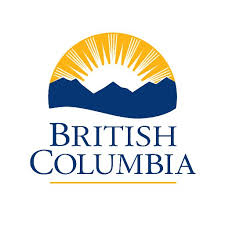OGC
Type of resources
Available actions
Topics
Keywords
Contact for the resource
Provided by
Years
Formats
Representation types
Update frequencies
status
Service types
-
-
-

The European Environment Agency (EEA) is an agency of the European Union (EU) tasked with providing independent information on the environment. Established in 1990 and headquartered in Copenhagen, Denmark, the EEA serves as a key source of environmental data, assessments, and reports for policymakers and the public across Europe. With a focus on improving environmental decision-making and promoting sustainable development, the agency plays a vital role in monitoring, analyzing, and communicating environmental trends and challenges. At its core, the EEA aims to support the development, implementation, and evaluation of EU environmental policies. It achieves this mission through a range of activities, including data collection, analysis, and reporting. The agency collaborates with national environmental agencies in EU member states, as well as other international organizations, to gather and harmonize environmental data from across Europe. This wealth of information is then used to produce high-quality assessments and reports on various environmental topics. One of the primary functions of the EEA is to provide regular assessments of the state of Europe's environment. These assessments cover a wide range of issues, including air and water quality, biodiversity, climate change, and resource use. By compiling and analyzing data from different sources, the agency produces comprehensive reports that highlight key environmental trends, identify emerging challenges, and assess progress towards environmental objectives. These assessments are invaluable tools for policymakers, helping them to make informed decisions and prioritize actions to protect and improve the environment. In addition to assessing the state of the environment, the EEA also plays a crucial role in monitoring the effectiveness of environmental policies and measures. The agency tracks the implementation of EU environmental legislation and policies, assessing their impact on the ground. By evaluating the success or shortcomings of these policies, the EEA provides valuable feedback to policymakers, helping them to refine and strengthen environmental governance at the European level. Furthermore, the EEA acts as a hub for environmental information and knowledge exchange. The agency maintains several databases and online platforms, such as the European Environmental Data Centre (EEDC) and the European Environment Information and Observation Network (EIONET), which provide access to a wealth of environmental data, maps, and indicators. These resources are freely available to policymakers, researchers, NGOs, and the public, supporting evidence-based decision-making and fostering greater transparency and accountability in environmental governance. In this page you can find the Web Services of the European Environment Agency
-

Offshore Oil and Gias exporation Potential
-

Tenure Areas are geographic administrative areas named for local features and used to group petroleum and natural gas Land Plats situated within the same local geographic area.
-

Uppruni gagna vefkorts LMÍ er úr nokkrum áttum. Landhæðalíkan LMÍ er notað bæði til þess að lita undirlagið, en hæðarskyggingin er einnig unnin úr því. CORINE er notað til að gefa hugmyndir um yfirborð lands. Vatnafars gögn úr Euro Global Map eru notuð í smærri skölum, en eftir því sem þysjað er inn taka önnur gögn við. Stærstur hluti gagnanna kemur þó úr IS 50V, en þar ber að nefna samgöngur, mannvirki, vatnafar og hæðarlínur. IS 50V gagnasettin birtast mestmegnis í stærri skölum að frá töldu samgöngu línunum sem eru með frá skalanum 1:3.000.000. Dýpislínur frá Landhelgisgæslu Íslands eru birtar í öllum þysjunarstigum. Til að tengja þjónustuna við QGIS þarf að fara eftir leiðbeiningum sem eru á smámyndunum sem fylgja þessari skráningu.
-

Landslags kort LMÍ var búið til fyrir grunngerð landupplýsinga, ætlunin er að kortið sé notað sem bakgrunnur og skyggi ekki á þau gögn sem lögð eru ofaná. Kortið er unnið út frá Kort LMÍ og eru kortin mjög áþekk en þó er nokkrum lögum sleppt sem eru til staðar á Kort LMÍ. Uppruni gagna Landslags LMÍ er úr nokkrum áttum. Landhæðalíkan LMÍ er notað bæði til þess að lita undirlagið, en hæðarskyggingin er einnig unnin úr því. CORINE er notað til að gefa hugmyndir um yfirborð lands. Vatnafars gögn úr Euro Global Map eru notuð í smærri skölum, en eftir því sem þysjað er inn taka önnur gögn við. I5 50V gögnin, vatnafar og hæðarlínur, fara að birtast þegar þysjað er inn í stærri skala. Dýpislínur frá Landhelgisgæslu Íslands eru birtar í öllum þysjunarstigum. Til að tengja þjónustuna við QGIS þarf að fara eftir leiðbeiningum sem eru á smámyndunum sem fylgja þessari skráningu.
-
Safn skannaðra Íslandskorta í kvarðanum 1:100.000, svokölluð Atlaskort gerð af landmælingadeild danska herforingjaráðsins á fyrstu fjórum áratugum 20. aldarinnar, en seinast uppfærð árið 1989. Uppréttar GeoTIFF myndir sem varpað var úr VisIT hugbúnaðinum þegar kortin voru gefin út á diskum. Til að tengja þjónustuna við QGIS þarf að fara eftir leiðbeiningum sem eru á smámyndunum sem fylgja þessari skráningu. Hægt er að ná í kortið sem er notað í þjónustuna á Geoserver LMÍ. Sjá tengil hér fyrir neðan.
-

Road centre-lines associated with oil and gas road activity and falling within the area representing the road right of way. This dataset contains line features for approved road centre-line locations collected on or after October 30, 2006. This dataset is updated nightly.
-

Land Plats illustrate in map view the oil or gas Spacing Areas delimited in a pool, and names the geological formation in which the pool is recognised. Land Plats are the sole official record of where the Director of PandNG Titles Branch recognizes a pool of hydrocarbons to exist for the purpose of administering oil and gas title
 Arctic SDI catalogue
Arctic SDI catalogue